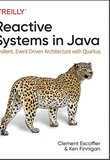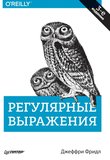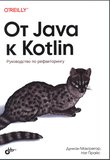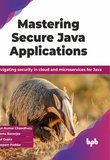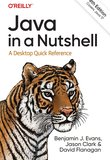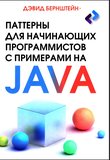-
.NET (.NET Core)
-
1C
-
APL
-
AWK
-
Agda
-
Agile/Scrum
-
Alef
-
Assembler
-
Basic
-
Beta Programming Language
-
Big Data/DataScience
-
C
-
C#
-
C++
-
CSS
-
Cobol
-
Crystal
-
D
-
Dart
-
DataBase (SQL)
-
Delphi
-
F#
-
Flutter
-
Fortran
-
GPT/AI/ИИ
-
GameDev
-
Git
-
Go (Golang)
-
HTML
-
Hacking and Security
-
Haskell
-
Java
-
JavaScript (JS)
-
Julia
-
Kotlin
-
Machine Learning (ML)
-
Natural language processing (NLP)
-
PHP
-
Pascal
-
Python
-
R
-
Ruby
-
Rust
-
Scratch
-
Swift
-
UML
-
UX/UI
-
Visual Basic
-
Wolfram
-
XML
-
АСУ
-
Проектирование/System Design
-
Сети/Network
-
Схемотехника/электронные схемы
-
.NET (.NET Core)
-
1C
-
APL
-
AWK
-
Agda
-
Agile/Scrum
-
Alef
-
Assembler
-
Basic
-
Beta Programming Language
-
Big Data/DataScience
-
C
-
C#
-
C++
-
CSS
-
Cobol
-
Crystal
-
D
-
Dart
-
DataBase (SQL)
-
Delphi
-
F#
-
Flutter
-
Fortran
-
GPT/AI/ИИ
-
GameDev
-
Git
-
Go (Golang)
-
HTML
-
Hacking and Security
-
Haskell
-
Java
-
JavaScript (JS)
-
Julia
-
Kotlin
-
Machine Learning (ML)
-
Natural language processing (NLP)
-
PHP
-
Pascal
-
Python
-
R
-
Ruby
-
Rust
-
Scratch
-
Swift
-
UML
-
UX/UI
-
Visual Basic
-
Wolfram
-
XML
-
АСУ
-
Проектирование/System Design
-
Сети/Network
-
Схемотехника/электронные схемы
Меню
Learning Java: An Introduction to Real-World Programming with Java. 6 Ed
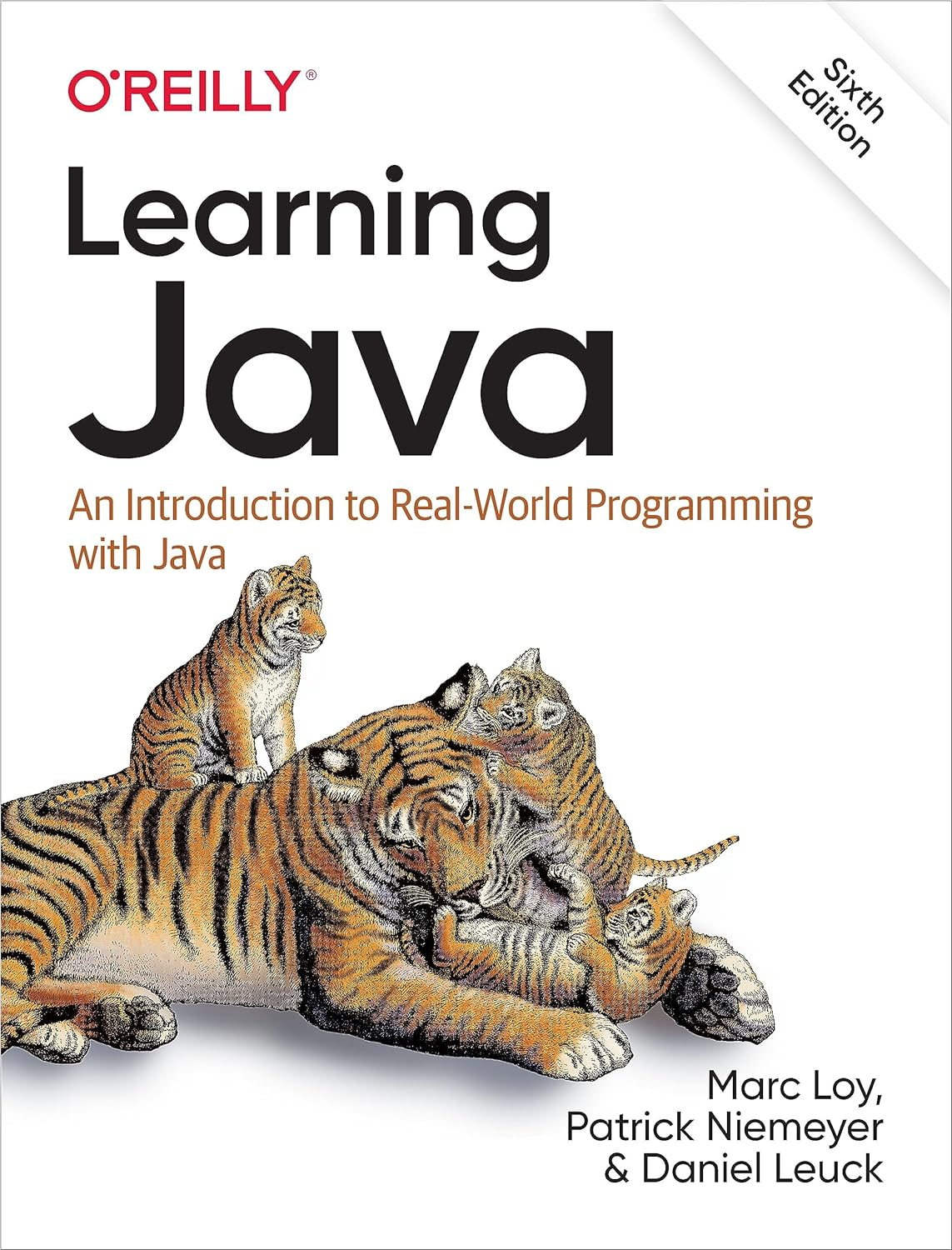
Автор: Leuck Dan, Loy Marc, Niemeyer Patrick
Дата выхода: 2023
Издательство: O’Reilly Media, Inc.
Количество страниц: 552
Размер файла: 3,8 МБ
Тип файла: PDF
Добавил: codelibs
Copyright
Table of Contents
Preface
Who Should Read This Book
New Developments
New in This Edition (Java 15, 16, 17, 18, 19, 20, 21)
Using This Book
Online Resources
Conventions Used in This Book
Using Code Examples
O’Reilly Online Learning
How to Contact Us
Acknowledgments
Chapter 1. A Modern Language
Enter Java
Java’s Origins
Growing Up
A Virtual Machine
Java Compared with Other Languages
Safety of Design
Simplify, Simplify, Simplify…
Type Safety and Method Binding
Incremental Development
Dynamic Memory Management
Error Handling
Threads
Scalability
Safety of Implementation
The Verifier
Class Loaders
Application and User-Level Security
A Java Road Map
The Past: Java 1.0–Java 20
The Present: Java 21
The Future
Exercises
Chapter 2. A First Application
Java Tools and Environment
Installing the JDK
Installing IntelliJ IDEA and Creating a Project
Running the Project
Grabbing the Examples
HelloJava
Classes
The main() Method
Classes and Objects
Variables and Class Types
HelloComponent
Inheritance
The JComponent Class
Relationships and Finger-Pointing
Packages and Imports
The paintComponent() Method
HelloJava2: The Sequel
Instance Variables
Constructors
Events
The repaint() Method
Interfaces
Goodbye and Hello Again
Review Questions
Code Exercises
Chapter 3. Tools of the Trade
JDK Environment
The Java VM
Running Java Applications
System Properties
The Classpath
CLASSPATH on Unix and macOS
CLASSPATH on Windows
CLASSPATH Wildcards
Modules
The Java Compiler
Trying Java
JAR Files
The jar Utility
Tool Wrap-Up
Review Questions
Code Exercises
Advanced Code Exercises
Chapter 4. The Java Language
Text Encoding
Comments
Javadoc Comments
Annotations
Variables and Constants
Types
Primitive Types
Reference Types
A Word About Strings
Statements and Expressions
Statements
Expressions
Arrays
Array Types
Array Creation and Initialization
Using Arrays
Anonymous Arrays
Multidimensional Arrays
Types and Classes and Arrays, Oh My!
Review Questions
Code Exercises
Advanced Exercises
Chapter 5. Objects in Java
Classes
Declaring and Instantiating Classes
Accessing Fields and Methods
Static Members
Methods
Local Variables
Shadowing
Static Methods
Initializing Local Variables
Argument Passing and References
Wrappers for Primitive Types
Method Overloading
Object Creation
Constructors
Working with Overloaded Constructors
Object Destruction
Garbage Collection
Packages
Importing Classes
Custom Packages
Member Visibility and Access
Compiling with Packages
Advanced Class Design
Subclassing and Inheritance
Abstract Classes and Methods
Interfaces
Inner Classes
Anonymous Inner Classes
Organizing Content and Planning for Failure
Review Questions
Code Exercises
Advanced Exercises
Chapter 6. Error Handling
Exceptions
Exceptions and Error Classes
Exception Handling
Bubbling Up
Stack Traces
Checked and Unchecked Exceptions
Throwing Exceptions
try Creep
The finally Clause
try with Resources
Performance Issues
Assertions
Enabling and Disabling Assertions
Using Assertions
Real-World Exceptions
Review Questions
Code Exercises
Advanced Exercises
Chapter 7. Collections and Generics
Collections
The Collection Interface
Collection Types
The Map Interface
Type Limitations
Containers: Building a Better Mousetrap
Can Containers Be Fixed?
Enter Generics
Talking About Types
“There Is No Spoon”
Erasure
Raw Types
Parameterized Type Relationships
Why Isn’t a List<Date> a List<Object>?
Casts
Converting Between Collections and Arrays
Iterator
A Closer Look: The sort() Method
Application: Trees on the Field
Useful Features
Review Questions
Code Exercises
Advanced Exercises
Chapter 8. Text and Core Utilities
Strings
Constructing Strings
Strings from Things
Comparing Strings
Searching
String Method Summary
Things from Strings
Parsing Primitive Numbers
Tokenizing Text
Regular Expressions
Regex Notation
The java.util.regex API
Math Utilities
The java.lang.Math Class
Big/Precise Numbers
Dates and Times
Local Dates and Times
Comparing and Manipulating Dates and Times
Time Zones
Parsing and Formatting Dates and Times
Formatting Dates and Times
Timestamps
Other Useful Utilities
Review Questions
Code Exercises
Chapter 9. Threads
Introducing Threads
The Thread Class and the Runnable Interface
Controlling Threads
Revisiting Animation with Threads
Death of a Thread
Virtual Threads
Preview Feature Tangent
A Quick Comparison
Synchronization
Serializing Access to Methods
Accessing Class and Instance Variables from Multiple Threads
Scheduling and Priority
Thread State
Time-Slicing
Priorities
Thread Performance
The Cost of Synchronization
Thread Resource Consumption
Virtual Thread Performance
Concurrency Utilities
Upgrading Our Queue Demo
Structured Concurrency
So Many Threads to Pull
Review Questions
Code Exercises
Chapter 10. File Input and Output
Streams
Basic I/O
Character Streams
Stream Wrappers
The java.io.File Class
File Streams
RandomAccessFile
The New I/O File API
FileSystem and Path
NIO File Operations
The NIO Package
Asynchronous I/O
Performance
Mapped and Locked Files
Channels
Buffers
Character Encoders and Decoders
FileChannel
FileChannel Example
wrap() Up
Review Questions
Code Exercises
Advanced Exercises
Chapter 11. Functional Approaches in Java
Functions 101
Lambdas
Lambda Expressions
Functional Interfaces
Method References
Practical Lambdas: Sorting
Streams
Sources and Operations
Filtering Streams
Mapping Streams
Flatmaps
Reducing and Collecting
Using Lambdas Directly
Next Steps
Review Questions
Code Exercises
Advanced Exercises
Chapter 12. Desktop Applications
Buttons and Sliders and Text Fields, Oh My!
Component Hierarchies
Model View Controller Architecture
Labels and Buttons
Text Components
Other Components
Containers and Layouts
Frames and Windows
JPanel
Layout Managers
Events
Mouse Events
Action Events
Change Events
Other Events
Threading Considerations
SwingUtilities and Component Updates
Timers
But Wait, There’s More
Menus
Modals and Pop-Ups
User Interface and User Experience
Review Questions
Code Exercises
Advanced Exercises
Chapter 13. Network Programming in Java
Uniform Resource Locators
The URL Class
Stream Data
Getting the Content as an Object
Managing Connections
Talking to Web Applications
Using the GET Method
Using the POST Method
The HttpURLConnection
SSL and Secure Web Communications
Network Programming
Sockets
Clients and Servers
The DateAtHost Client
A Distributed Game
Much More to Explore
Review Questions
Code Exercises
Advanced Exercises
Appendix A. Code Examples and IntelliJ IDEA
Grabbing the Main Code Examples
Importing the Examples
Appendix B. Exercise Answers
Chapter 1: A Modern Language
Chapter 2: A First Application
Code Exercises
Chapter 3: Tools of the Trade
Code Exercises
Chapter 4: The Java Language
Code Exercises
Advanced Exercises
Chapter 5: Objects in Java
Code Exercises
Advanced Exercises
Chapter 6: Error Handling
Code Exercises
Advanced Exercises
Chapter 7: Collections and Generics
Code Exercises
Advanced Exercises
Chapter 8: Text and Core Utilities
Code Exercises
Chapter 9: Threads
Code Exercises
Chapter 10: File Input and Output
Code Exercises
Advanced Exercises
Chapter 11: Functional Approaches in Java
Code Exercises
Advanced Exercises
Chapter 12: Desktop Applications
Code Exercises
Advanced Exercises
Chapter 13: Network Programming in Java
Code Exercises
Advanced Exercises
Glossary
Index
About the Authors
Colophon
This book introduces the Java programming language and environment. Whether you are a software developer or just someone who uses the internet in your daily life, you’ve undoubtedly heard about Java.
Its arrival was one of the most exciting developments in the history of the web, and Java applications continue to power business on the internet. Java is, arguably, the most popular programming language in the world, used by millions of developers on almost every kind of computer imaginable.
Java has surpassed languages such as C++ and Visual Basic in terms of developer demand and has become the de facto language for certain kinds of development—especially for web-based services.
Most universities are now using Java in their introductory courses alongside the other important modern languages. Perhaps you’re using this text in one of your classes right now! This book gives you a thorough grounding in Java fundamentals and grammar. Learning Java, Sixth Edition, attempts to live up to its name by mapping out the Java language and its class libraries, programming techniques, and idioms. We’ll dig deep into interesting areas and at least scratch the surface of other popular topics.
Other titles from O’Reilly pick up where we leave off and provide more comprehensive information on specific areas and applications of Java. Whenever possible, we provide compelling, realistic, and fun examples and avoid merely cataloging features.
The examples are simple but hint at what can be done. We won’t be developing the next great “killer app” in these pages, but we hope to give you a starting point for many hours of experimentation and inspired tinkering that will lead you to develop one yourself.
